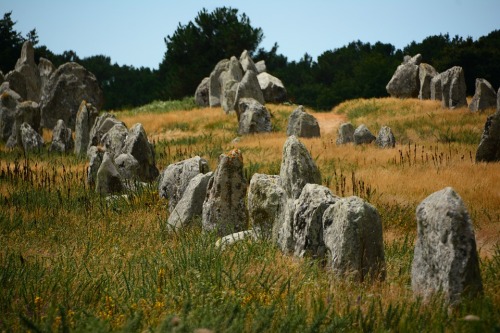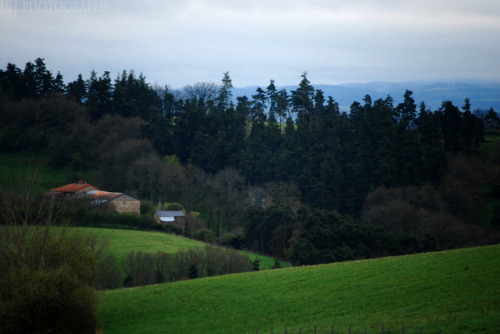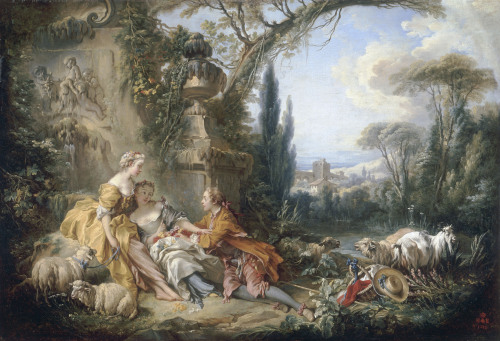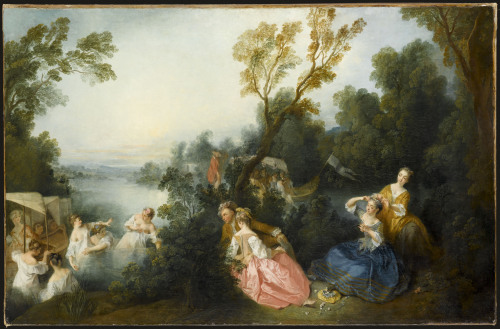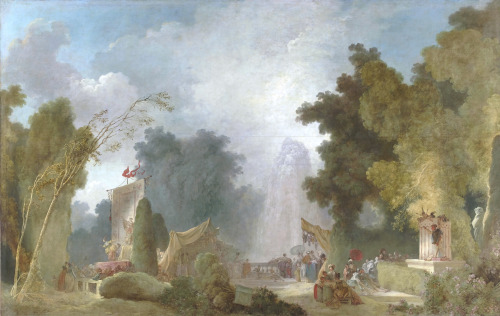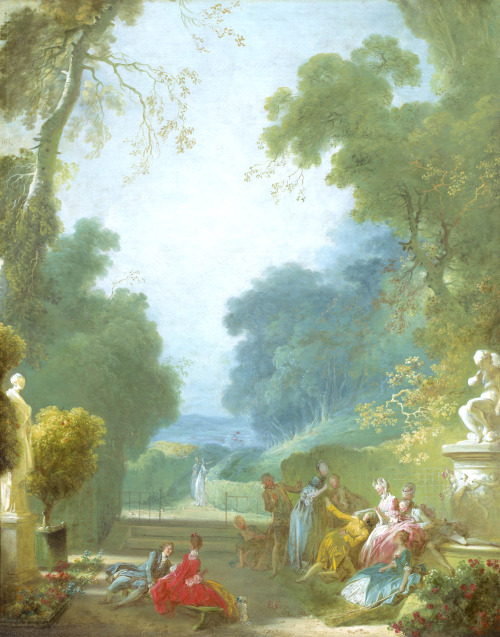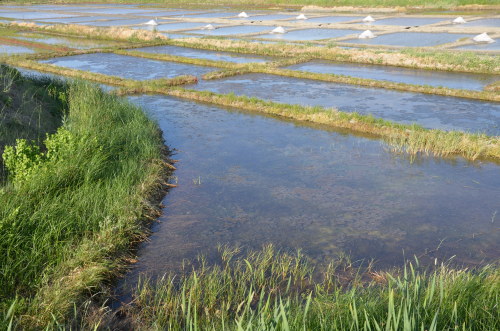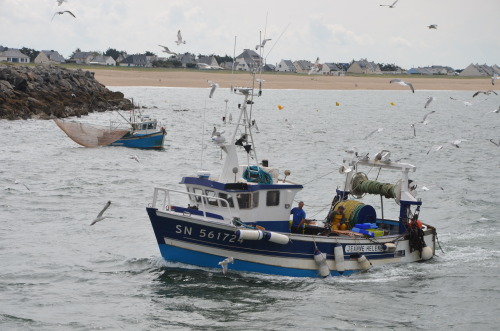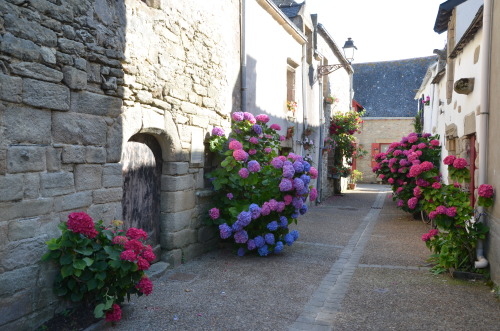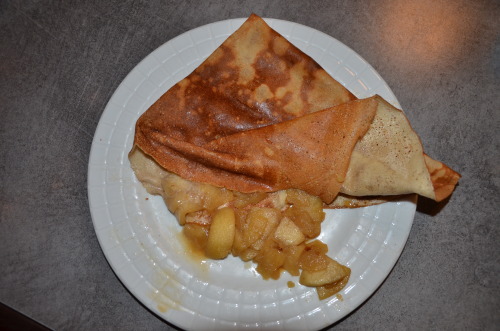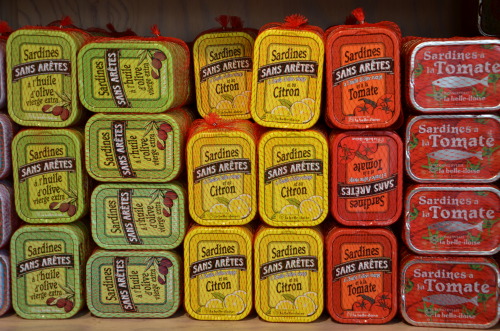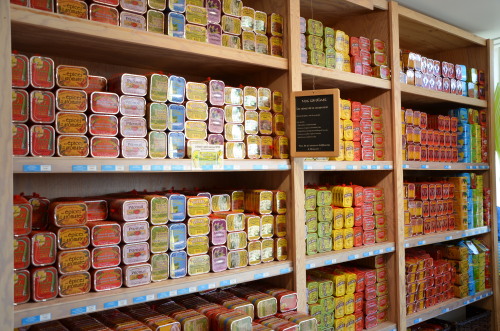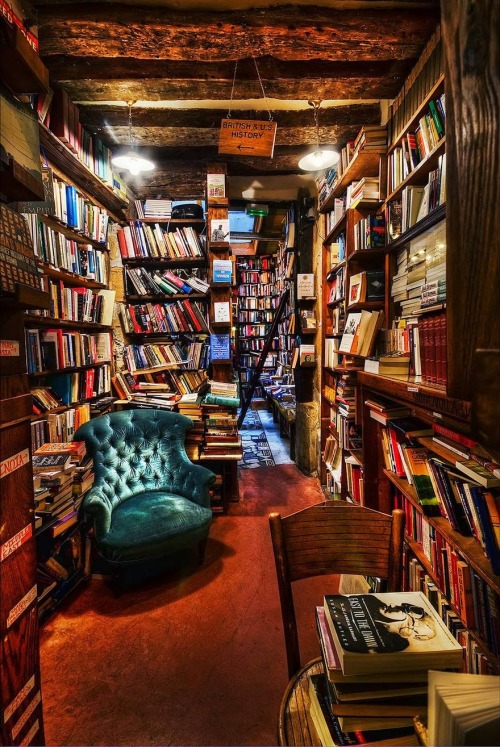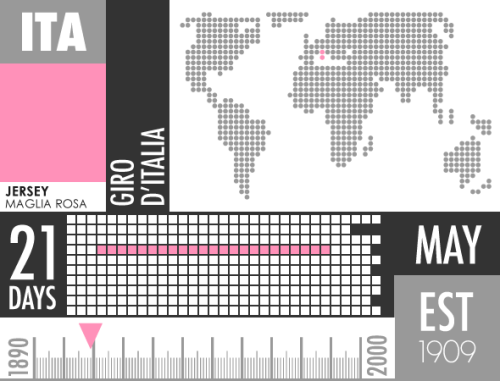#france
The first leg of my journey was all the way through France to Barcelona. Our hotel was waiting for us only a few minutes walk from La Monumental, where Battle of the Nations 2017 was to be held.
We were in a rush to check in to our room, so we aimed to do the drive in a little over 10 hours, all on the opposite side of the road and car and while we had already been on planes for 24 hours.
We got to drive through the beautiful countryside of Bordeaux without speaking a word of French.
I would love to this drive again but give myself at least a week to roam the countryside and make the most of the beautiful landscape.
Post link
French cultural blogger Caroline Doudet, better known online as L’Irrégulière, who reviews books, films and TV series on her blog Cultur’elle, has been convicted by a French court for being ranked too well by Google. Or more exactly, for publishing a piece discouraging readers from eating at a Cap Ferret pizzeria.
The court requested she changed the blog entry title, seen as denigrating. L’Irrégulière elected to remove the whole article instead. “Technically, it was quicker to remove than to edit, especially since Google does as it pleases anyway, as we can see with the cached page”, she explains in an email interview.
L’Irrégulière reproached the restaurant for its terrible service, a criticism echoed by more than a few reviews on Trip Advisor, although a near-equal number rave about the place and its pizzas.
The whole affair happened on the down low, barely mentioned by L’Irrégulière herself, until lawyer and star Tweeter @Maitre_Eolas (142K followers) highlighted it on 7 July. The news was picked up by media analysis site Arrets Sur Image and has since made headlines in specialist digital publications as well as in mainstream news outlets such as Le MondeandThe Independent.
Ms Doudet, who acknowledges being surprised by the support she’s received from readers and strangers alike, says she didn’t expect the reactions to reach such proportions: “I was always going to let my readers know about it, probably on Facebook since I didn’t write about the whole affair on my blog itself. I doubt it would have had such a snowball effect though”.
In addition to being asked to edit her title, L’Irrégulière has to pay up €2,5000 in damages, a significant amount for this high-school teacher. Asked by her readers how they could best support her, the blogger set up a crowdfunding page on platform Pot Commun. She’s since had to shut it down since the process isn’t allowed by the French tax administration.
So is this the end of bloggers’ freedom of speech in France? Unlikely.
Although seemingly about slander, this ruling is actually about Internet misunderstanding and how behind the judicial system is. The judge asked for the title to be edited, ignoring caching. The restaurateur brought the case to the courts because “the article was going up and up in Google ranking”, which is the nature of SEO and something no amount of ruling can do anything against. Ms Doudet declared to the BBC that “this decision creates a new crime of ‘being too highly ranked [on a search engine]’, or of having too great an influence’”. The Google algorithm (as well as people’s searches) is responsible for that ranking, not her.
The restaurateur, like the lawyer who advised her, ignored that any outcome favourable to them would be met with an Internet storm. Today, anyone searching for “Il Giardino Cap-Ferret” on French or English search engines will be met with articles about the ruling rather than about the greatness (or lack of) of its cuisine. The damage to the restaurant reputation is higher than to Cultur’elle, a thoughtful, well written and intelligent amateur French blog that, ironically, I would never have discovered otherwise. Of course, this is a perfect example of the Streisand effect whereby strong attempts to crush one bit of information from becoming public results in its popularisation.
As Eloise Wagner, an intellectual property lawyer, writes for Le Nouvel Observateur, lawsuits prompted by bad reviews are nothing new in the gastronomy world, although they tend to be about guidebook criticism. French law allows criticism providing it is fair, objective and not made with the intention of damaging a reputation.
Ms Doudet elected not to have legal representation at the emergency hearing because it came as a surprise and she wasn’t able to get any in a short period of time. A lawyer would have argued that the review wasn’t done to damage the restaurant but based on a series of facts experienced by the blogger, which she lays out in the entry: dishes sent in the wrong order, unprofessional service etc. A lawyer would also have quoted a number of French and European prior cases and legal texts that go against the ruling.
Since, under French law, the ruling against L’Irrégulière doesn’t create a legal precedent, but that hopefully the reaction to it will be a cautionary tale for other companies wishing to pursue a similar route, it is unlikely the affair will have many freedom of speech consequences.
As for Ms Doudet, she hopes the ruling won’t change the way she writes her blog although she observes “there are topics I might avoid, which is silly since I have been to many nice places recently. It’s true I rarely write rants like this one, and when I do it tends to be more about news topics than brands. Regarding books, my reviews tend to be quite measured anyway and I doubt any publisher would risk a trial.”
Explore the Fêtes Galantes at Paris’ Musée Jacquemart-André
From Watteau to Fragonard, Les Fêtes Galantes, an exhibition currently showing at Paris’ Jacquemart-André museum, is the perfect introduction to this elegant and refined period of French art history.
The term refers to a new style of painting and drawing that blossomed in the early 18th century, at the end of Louis XIV’s reign, and lasted throughout the Regency period. Typically, the paintings feature groups of men and women engaging in games or conversation amidst idealised representations of nature.
Located on the top floor of the Jacquemart-André museum, the exhibition explores, over 60 paintings and drawings, the chronological evolution of Fêtes Galantes.
The star of the exhibition is Jean-Honoré Fragonard’s La Fête à Saint-Cloud, a large painting on exceptional loan from France’s national bank La Banque de France. It depicts, in great detail, a fair in a Western suburb of Paris. There is a puppet theatre, puppet sellers, women playing, a fallen tree… Each scene could be a painting on its own.
Although La Fête a Saint-Cloud is an extraordinary painting and I was lucky to see it for real, my favourite section of the exhibition was the display of Antoine Watteau’s drawings, particularly his red chalks. Here, his talent and the spontaneity of his strokes are visible to all. Stripped from the corset of oil painting, his characters seem ready to move out of their frames, their clothes coming to life in the vivid rendering of fabrics and pleats.
Inspired by pastoral scenes, Watteau was a pioneer of the Fêtes Galantes genre. A fascinating short video at the very beginning of the exhibition explains how the at-times-lazy Watteau would cover his paintings with a sheet when his work done, just so he could make a copy and reuse groups of characters on other paintings. He used this technique on two depictions of a Pilgrimage to Cythera. Experts are still disputing which one he painted first. Neither painting is on display at the exhibition but the discussion surrounding them, particularly the debate as to whether the characters are arriving at or leaving from the island of love, is another Fêtes Galantes trait. Calling upon themes of love and relationship that resonate with all of us, the genre entices the imagination.
For instance, Jean-Francois de Troy’s The Rendez-Vous at the Fountain or The Alarm depicts a couple in close conversation. Is it an illicit meeting between lovers? Sweet words between newly enamoured young people? Or maybe a conversation between a man and a woman whose families disapprove of their union? A servant, asked to keep guard, interrupts. Quick, one of you hide! Someone is coming and they can’t be seen together.
Another painting that’s easy to extrapolate from is Jean-Baptiste Leprince’s La Precaution Inutile. A woman in her late teens sits on a bench, tied to an older man. He is sleeping. Is he a father, worried his daughter is going to show independent thought? A much older husband forced on her, concerned his wife might not be so enamoured with all his wrinkles? A servant tasked with looking after a girl displaying too much liberty? Whoever he is, his stratagem failed: a young man, partly hidden in the bushes, is taking advantage of his slumber to seduce the charge.
Beyond the beauty and technicality of the paintings, the Fêtes Galantes exhibition is a reminder of what romance was in the 18th century, and of the restrictions and social conventions imposed on individuals.
Sadly, the exhibition doesn’t make the best of its incredible surroundings. Much like the Nissim de Camondo museum, the Jacquemart-André Museum is a private mansion turned national museum, which dates back to the early 20th century. The Jacquemart-André couple collected multiple Fêtes Galantes paintings, which can be seen throughout the residence, without a clear link made to the exhibition taking place upstairs.
Collectors and artists, Edouard André and Nélie Jacquemart assembled, over 10 years, 5,000 or so oeuvres d’art ranging from Tiepolo’s massive fresco The Return of Henry III, moved from Italy to overlook the grand staircase, to Uccello’s iconic Saint Georges and the Dragon, which was reproduced in all my English language books.
An island of quietness straight on Boulevard Haussmann, the museum hosts a high-end café, with surroundings matching in grandeur and decoration the collections. There is a Fêtes Galantes-themed menu. My sister and I had the Lancret, a duck with soy and honey sauce, green asparagus and risotto and mushrooms. This was followed by a nutty Russian cake and a cream and raspberry-filled macaroon from the decadent dessert trolley. Despite this, the best part of the café probably is Parisians-watching. They are exactly the kind of Parisians you read about in books and magazines but don’t think exist in real life. This seems to be where they lunch.
Photo credits: (1) Antoine Watteau (1684-1721), La Proposition embarrassante Vers 1715 - 1720 Huile sur toile 65 x 84,5 cm Musée de l’Ermitage, Saint-Pétersbourg Photograph © The State Hermitage Museum / Vladimir Terebenin; (2) Antoine Watteau (1684 – 1721), Fête galante avec joueur de guitare et sculpture d’enfants jouant avec une chèvre Vers 1717-1719 Huile sur toile 115 x 167 cm Inv. Kat. Nr. 474 B Berlin, Staatliche Museen zu Berlin, Gemäldegalerie © BPK, Berlin, Dist. RMN-Grand Palais / Jörg P. Anders; (3) François Boucher (1703-1770), Les Charmes de la vie champêtre Huile sur toile 100 x 146 cm Musée du Louvre, Département des Peintures, Paris © RMN-Grand Palais (musée du Louvre) / Jean-Gilles Berizzi; (4) Antoine Watteau (1684-1721), Pierrot content Vers 1712-1713 Huile sur toile 35 x 31 cm Madrid, Museo Thyssen-Bornemisza © Museo Thyssen-Bornemisza, Madrid; (5) Nicolas Lancret (1690-1743), Fête Galante avec la Camargo dansant avec un partenaire Vers 1727-1728 Huile sur toile, 76,2 x 106,7 cm National Gallery of art, Washington, W. Mellon collection © Courtesy National Gallery of Art, Washington; (6) Nicolas Lancret (1690-1743), Baigneuses et spectateurs dans un paysage (Les Plaisirs du bain) Avant 1725, huile sur toile, 97 x 145 cm Paris, Musée du Louvre, Département des peintures, collection du baron Edmond de Rothschild (1926-1997); dation en paiement de droits de mutation, 1990 © RMN-Grand Palais (musée du Louvre) / Jean-Gilles Berizzi; (7) François Boucher (1703-1770), Pastorale Huile sur toile, 64,5 x 81 cm Karlsruhe, Staatliche Kunsthalle © Staatliche Kunsthalle Karlsruhe; (8) Jean-Honoré Fragonard (1732-1806), La Fête à Saint-Cloud Vers 1775-1780, huile sur toile, 214 x 334 cm Paris, Hôtel de Toulouse, siège de la Banque de France © RMN-Grand Palais / Gérard Blot; (9) Jean-Honoré Fragonard (1732-1806), Le Jeu de la Main chaude Vers 1775-1780 Huile sur toile, 115,5 x 91,5 cm Washington, D.C., National Gallery of art, Washington, Samuel H. Kress collection © Courtesy National Gallery of Art, Washington 3
Post link
Places to go and things to eat around Guérande (Brittany)
You might know Guérande (Photo 1) for its sea salt. It is collected in the Marais Salants (photo 2) through a long process that involves waiting for the seawater to evaporate. If you’re asked for more than €5 for a five kilo bag, at the market or at one of the shack on the side of the roads, you’re being had.
I know Guérande because aged one to five, I holidayed there every summer, at my grandparents’ house. I have limited memories of the place, although during the week I just spent there, I kept being struck by justified feelings of déjà-vu.
We stayed at Le Croisic (photo 3 and 10), a nice enough village at the end of a peninsula. I wouldn’t recommend it for a long term stay; you’d probably get claustrophobic as almost any journey requires going through the village of Batz-sur-Mer. Alternatives would be Piriac (photo 5), a typical Brittany village or La Turballe (photo 4), a port which is busy all year round. Local specialty: the sardines, which you can see being unloaded from the boats every day. You, and the dozens of seagulls waiting for their goodies.
O Jardin Secret, 10 quai du Port Ciguet, 44 490 Le Croisic
One of the best value-for-money restaurants on Le Croisic wharf, O Jardin Secret serves fresh products straight from the Criée (fish market) standing opposite. The basic, three-dish menu costs €16.90, and includes a choice of fish soup or home-smoked salmon for starter followed by the fish of the day with a beurre blanc sauce and mashed potatoes or meat. Dessert is a floating island, sorbet or the local Far Breton, a cooked custard with plums.
Crêperies
Holidaying in Brittany without eating a single crêpe should be a sin. They are the local pizza, best served with a bolée de cidre, a bowl of cider. Crêpes can be cheap since the ingredients involved aren’t costly – you shouldn’t pay more than €6 for a basic savoury galette de froment with ham and cheese, and no more than €4 for a basic sweet crepe with sugar and butter.
Fleur de Sel, Village de Kervalet, 44740 Batz-sur-Mer
The best crêperie we tried was the restaurant Fleur de Sel, located in the cute and typical village of Kervalet (photo 7). Aside from the traditional ham, cheese, mushrooms galettes, the place offers specials ranging from La Turballaise, spread with a sardine-butter-shallots concoction, to La Paludier, with eggs, onions, pancetta and cheese. I had La Bretonne with a leek fondue, pancetta, crème fraiche and cheese, which was the perfect balance of tastes. My dessert was La Pimms, which had nothing to do with the alcohol and was instead filled with orange marmalade, hot chocolate sauce and topped with an orange sorbet. My dad had La Gourmande, topped with salted caramel ice-cream and a warm chocolate sauce while my mum chose La Normande with stewed apples, vanilla ice cream and salted caramel (photo 6). The bill added up to €54, including a bottle of local cider. We left stuffed and content.
Le Commerce, 1 rue des Viviers, 56760 Penestin
Le Commerce, in the Morbihan county (insider tip: to figure out when you have crossed the border from one French county to the next, watch out for a sudden tarmac change), is a fast-served crêperie with an imaginative menu. I had a complète with ham, cheese, mushrooms and eggs, which was moist and filling. My dad had one with Andouille de Guéméné, a local sausage delicacy made with smoked pork large intestine, another must-taste from the region. My mum had one with ham and tomatoes that was a bit dry. For dessert, you can’t go wrong with another local specialty, the salted caramel spread. Mine, the decadent Angélique, came with whipped cream, toasted almonds and vanilla ice cream.
Local products
La Belle Iloise (photos 8 and 9) sells yummy tinned fish, three words you might not read together very often. The chain has stores all along the Brittany coast selling tuna, sardines, fish and lobster soups as well as mackerel sandwich fillings at factory prices. Take an empty suitcase: all products are sold by lots of at least three. Prices start around €5 for three salmon and tarragon spread tins. It’s also a great place for presents, since all stores offer assortments.
Driving through Brittany, you’ll keep seeing biscuiteriesandfabriques de biscuits on the side of the road. Park by any of them and you’re guaranteed to find a wealth of butter-based desserts: palets and galettes, gateaux Bretons, crepes, Kouign amann… La Trinitaine, a semi-industrial chain, sells the cheapest salted caramels of the lot at €17 per kilo. And I’d know, since we visited about 10 to compare. The salted caramel spread is a nice alternative, perfect on brioche, also produced locally. For a more upmarket and semi-artisan version, local son and “meilleur ouvrier de France” (‘best artisan in France’) George Larnicol has opened stores all over the region, selling for instance a little Kouign Amann, the Kouignette and Petit Ruilh, a melted biscuit filled with homemade jam.
Noirmoutier new potatoes. Like Jersey’s, but from a more local island. Can be found in any worth supermarket or from markets. | Secret Bichonné du couvent. A tome-like cheese with the cutest name (and considering France is rumoured to count 300 types of cheese, there was competition) since it means Beloved secret from the convent. | La Fraiseraie. A local artisan ice-cream chain that started in the 70s, growing strawberries around Pornic. You can still buy the locally picked strawberries, as well strawberry syrups and jams in their 10 stores but the real treat is their ice-cream: a rainbow of tastes. I recommend praline as well as poire-chocolat (pear and chocolate) made with actual pieces of pears.
All prices accurate as of 30 June 2014. Photos courtesy of Pierre Goulet.
Post link
My inbox remained eerily quiet on Saturday. Whether in French or in English, I didn’t receive the amount of emails I usually do at the start the weekend. Just over a month until Christmas, a key trading period for an industry in the midst of a slowdown, this felt weird.
Brands cancelled their marketing out of respect for the Paris terror attacks of Friday 13 November 2015 and its hundreds of dead, injured and shocked.
Across social media and emails, a few trends emerged:
- Brands that decided to go completely quiet, both out of respect and the fear that saying anything could lead to backlash.
- Brands that opted to pay tribute and to send thoughts to Paris, often with some version of the #prayforParis hashtag, itself problematic.
- Brands that went ahead with all their marketing as planned (particularly social media), which I assume had already been scheduled. This was mostly the English-speaking marketing.
- And finally, brands that took advantage of the terror attacks to further their own marketing, with the expected repercussions. For example, invitation-only website Rue La La sent out an email with the subject line ‘We stand with France’, and promised that ‘all net proceeds from this boutique will benefit the victims of the Paris tragedy’. Nice idea, but too soon.
Whether on a personal or corporate level, no one knew how to react. The shock everyone felt was reflected in the ways brands acted. They showed more humanity than marketing strategy usually allows them to. Yet, just like brands have crisis guidelines (in case someone dies in a store or in case something goes awfully wrong with a product for example), they also need crisis guidelines for terrorism. The consensus is that Paris won’t be a one off, so the luxury industry needs to decide how to deal with it.
It needs to be a better answer than staying mum rather than risking outrage. It needs to be more thought out than responding when people fashion can identify with are hit. Brands didn’t stop marketing comms when a Russian plane was downed in the Sinai. Similarly when Lebanon was hit by the worst terror attack since the end of the civil war. But Paris was a different story. For fashion and for historical, economic and creative reasons, Paris holds a special place in the fashion hearts and minds.
France is an important luxury fashion market. Tourists come to Paris to purchase fashion in a country renowned for it. Quoting data from Euromonitor, Luxury Society stated in February 2014 that, ‘in 2013, retail sales of luxury goods totalled €16.8 billion, a figure that is expected to climb to €19.8 billion by 2018’. As much as 60% of that expenditure is driven by tourism.
FromTunisiatoEgypt, terrorism has hit countries with strong tourist economies in the past. On Saturday, most grands magasins, including Printemps and Galleries Lafayettes, recognisable temples of luxury consumerism, closed their doors. During 2014, tourists drove 40% of purchases at Printemps. After the Charlie Hebdo shooting in January 2015, Reuters reported a 10% year on year drop in hotel occupancy. Luxury fashion is going to need to find a way to talk to that luxury travelling customer who might start eschewing France. Reflecting this concern, on Monday morning, Kering’s shares at the Paris stock exchange were slightly down.
Many luxury-seeking tourists come with passports whose links to ISIS are murky at best. If a portion of your bottom line depends on these countries, is stopping comms ‘as a mark of respect’ anything more than a cynical marketing gesture? Retailers should also check their supply chains and make sure none of the cotton their suppliers use comes from the Syrian fields under ISIS control.
Over the next few days, brands need to decide when it’s appropriate to start sending emails and posting on social media again in France. One of the reasons the Stade de France, the Bataclan concert hall and the Xth and XIth arrondissement restaurants were targeted was because of what they stand for: togetherness, the freedom to choose… Fashion (and clothing), with its relationship to the body, to self-expression, to culture and to women’s emancipation, also stands for many of these things.
I spent Saturday listening to and reading the news. Everyone agreed that one of the best things we can do is to keep living in the same way. Luxury brands have a duty in that. So once the French official mourning period is over, brands should go back to their planned marketing schedule. Of course, they should ensure that none of their copy or translation is in bad taste, that none of the assets they use are triggers… but they should go back to sending emails and posting on social media. Fluctuat nec mergitur.


